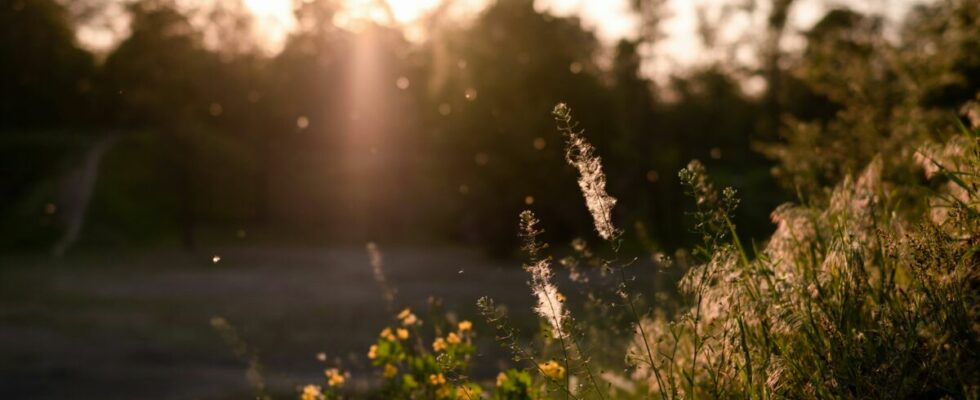While spring has not yet started, pollen is already present on French territory, with more or less high allergic risks. Like the 2023 pollen season, which had “started intensely” according to the National Aerobiological Surveillance Network (RNSA), the 2024 season also started early and sustained. The reason ? Mild weather and spring-like temperatures affected the entire French territory in February. A precocity “increasingly common due to climate change”, notes the surveillance network.
Pollen map 2024: which departments are on red alert in France according to the RNSA?
In its report of March 1, 2024, the RNSA nevertheless notes that the situation is improving on French territory. While only 13 French departments were not on red alert in mid-February, the monitoring institute only counted 10 departments on red alert in its March 1 report, mainly in the Mediterranean region:
- the Pyrénées-Orientales;
- Aude;
- Hérault;
- Gard;
- Vaucluse;
- Bouches-du-Rhône;
- the Var;
- the Alpes-Maritimes;
- Corsica.
What is this improvement due to? “The March showers are making a comeback, bringing a welcome respite to allergy sufferers”, specifies the RNSA. In fact, the rain showers predicted in the coming days will cover the pollen present on the ground and thus limit their dispersion in the air.
📹 Allergo-pollen video bulletin from March 1
Pollens slowed down by showers!
Don’t miss our latest video to learn everything about the allergic risks linked to pollen: https://t.co/ErVAvgHyBm#pollens #allergies— National Aerobiological Surveillance Network (@rnsa_pollen) March 1, 2024
Pollen map 2024: what types of pollen are present in the air at the moment in France?
A quarter of people in France are affected by a respiratory allergy. At this time, allergy sufferers must be particularly vigilant against Cupressaceae (cypress) pollen: red vigilance remains maintained for around ten departments, with very high concentrations in the south of France and Corsica.
Present en masse in recent weeks in France, pollens from the Betulaceae family (alder, hazel) continue to flower but are nevertheless losing ground in the country and will not exceed the average risk level. The hazelnut trees complete their pollination and move to a low to zero risk level.
However, bad news for allergy sufferers: birch pollen known to be very allergenic will make their return from mid-March. Indeed, the forecast spring conditions will encourage the flowering of birches, warn RNSA specialists.
While other trees are currently in flower, including ash, hornbeam, elm, willow and poplar, their pollens only pose a low level allergy risk.
What are the symptoms of a pollen allergy?
According to the Ministry of Health, allergy is a “hypersensitivity reaction initiated by a specific immune reaction to a substance foreign to the human body”. Although it is generally not serious, the symptoms can be particularly disabling, to the point of impacting the daily life and sleep of the affected person.
In the case of a pollen allergy, allergic reactions occur at the contact areas, namely the respiratory (nose and throat) and ocular (eyes) mucous membranes. Allergy generally manifests itself in two main forms, allergic rhinitis or allergic asthma with symptoms such as:
- signs of conjunctivitis: watery and itchy eyes;
- nasal congestion or runny nose;
- a sore throat, even a cough;
- an asthma attack;
- sleep disorders.
Pollen allergy is only rarely responsible for skin reactions, such as eczema or hives. However, if certain symptoms worsen, you should consult your doctor.
Pollen allergy: how to react and what are the right actions to adopt?
To better protect yourself from pollen and limit the risk of allergies, the RNSA shares some good tips for allergy sufferers, in particular:
- Rinse your hair in the evening before going to bed, so as not to leave traces of pollen on your pillow;
- Ventilate your home for at least 10 minutes a day, preferably before sunrise and after sunset, if possible;
- Avoid drying laundry outside;
- Keep car windows closed to prevent pollen from entering the passenger compartment while driving;
- Wear a surgical mask outdoors;
- Avoid any outdoor sporting activity which would then promote overexposure to pollen and therefore increase the risk of allergies.
At the same time, it is also important to avoid any exposure to allergenic factors, in particular tobacco, incense or even certain indoor perfumes.
Sources:
Read also :
⋙ Hay fever: what is the highest risk period for allergic rhinitis and how long does it last?
⋙ Ambrosia (allergy): symptoms, risk periods, treatment and how to limit attacks
⋙ Allergies: what are the best natural antihistamines?
